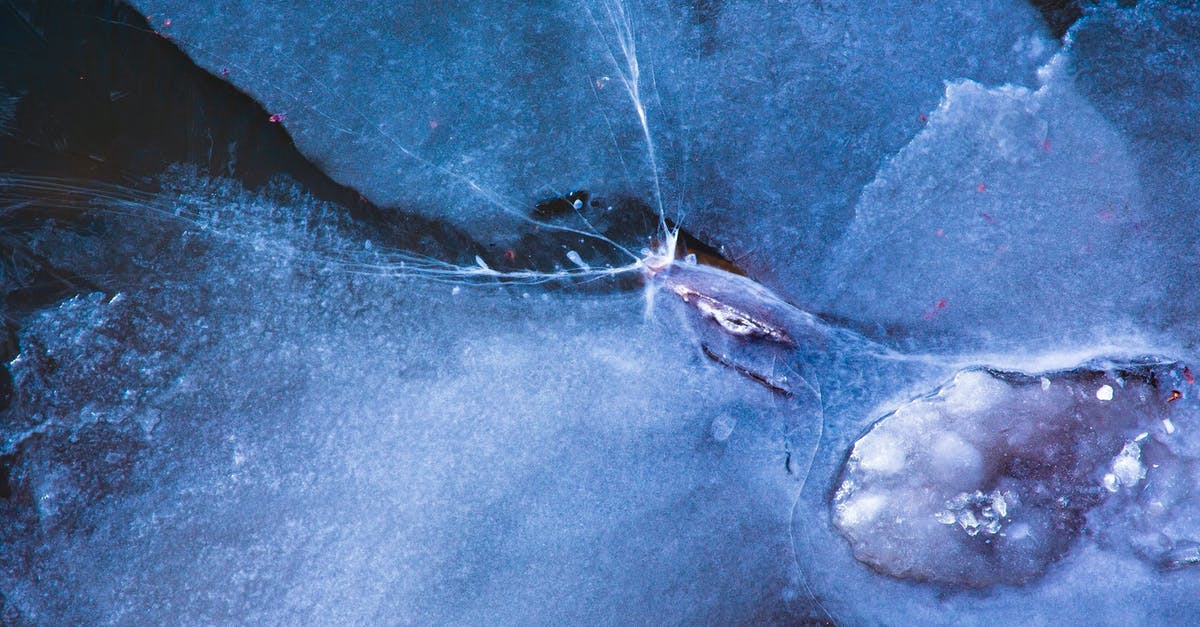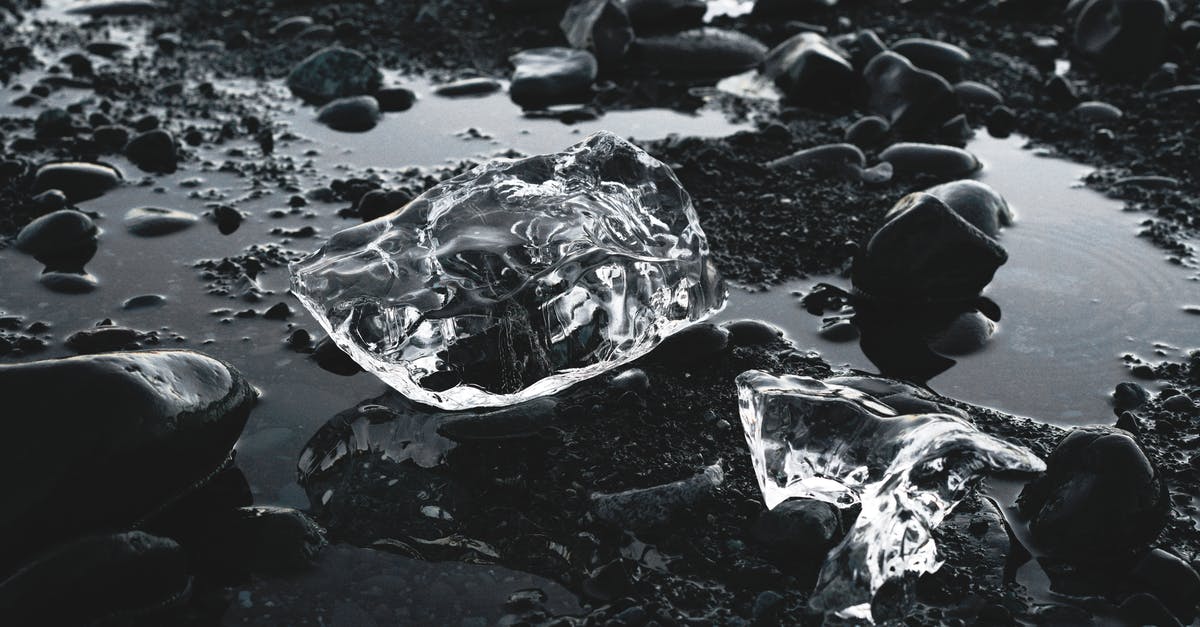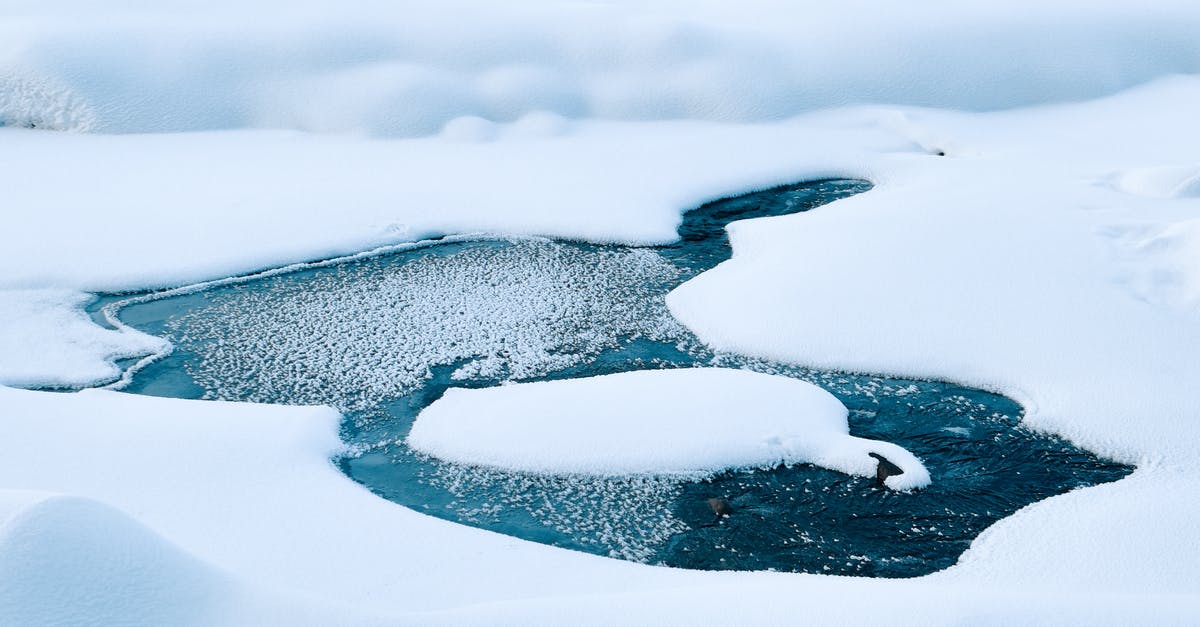Extent of poultry denaturing via freezing(ice crystal formation)?

I am told that during freezing ice crystals rupture vessels in poultry and denature them. This causes the poultry to have larger pores and so when cooking things like soup the poultry absorbs more water.
If you have a thin layer of ice crystal formation on your poultry is this going to denature just as much as if you had larger ice crystals forming?
I notice varying degree of ice crystal formation on different parts of my poultry in the freezer, do you know what factors might cause this to be the case e.g. perhaps bagging prevents ice crystal formation?
Will the length of time left in the freezer make a difference to the degree of pores size opening i.e. if you leave it for one day will that have near as much affect as if you had left it for a week?
Ideally like somebody who understands the chemistry of these things to answer with explanation but anybody who knows the correct answer will do.
Thanks in advance.
Please clarify two things in your answer.
1.You said if the container is not air tight frost will develop. Will this frost develop 'on' the food i.e. have no affect to denaturing as you say or is it likely to make its way 'in' the food and have a denaturing effect?
2.You have said if a food is frozen it is frozen and thereafter no denaturing can occur. Are you saying if frost develops in an already frozen food no denaturing will occur?
Are you also saying the denaturing only occurs when meat is in the process of freezing and during this time only do any developing ice crystals have an affect?
Best Answer
There's not really much chemistry happening here. It's just basic physics - ice crystals form when you freeze it, tearing through things a bit, and then they melt back into water when you thaw it. Some proteins are indeed sensitive to denaturing during freezing, but that's basically going to be a constant no matter how you freeze it. (Denaturing is just a destruction of the tertiary structure of the protein - so it will mess with its structural properties, but since it doesn't destroy the amino acids, it won't alter nutritional value. I don't know if structure-giving proteins in meat are sensitive to freezing denaturation, but I don't think there's anything you can do to affect it anyway.)
With respect to your first question: it's not the ice formation on the surface that matters. That's just sitting on the surface. It's the ice forming in the chicken that's tearing it apart. Amount of surface ice doesn't have an effect on the food underneath. It does mean that there'll be more water when you thaw it, though, and sometimes that's very undesirable (e.g. for bread) and sometimes it's just annoying (vegetables that you want to cook without much water). But all that matters for the food itself is the fact that it's frozen. This is the same kind of the thing that you see with fruit - if you freeze and thaw it, it'll be completely mushy, now that the ice crystals have destroyed its internal structure. This isn't so pronounced with meat, since it doesn't have as high a water content, but the texture is still somewhat altered.
For your second question: it's just a matter of how much moisture-containing air was able to get to the food. This is a common problem. The ideal case is a completely vacuum-sealed, airtight container: only the food will freeze, and there's no room for moisture to get to it and form surface ice. If something is airtight but was sealed in with normal, somewhat humid air, that moisture will create frost on the food. If it's not airtight, air will leak in, and humidity is brought in when you open the freezer, so it'll slowly accumulate frost.
For your third question: once something is frozen, it's frozen. It's not moving anymore. Pores aren't being opened. There's no effect from food being frozen longer. (Unless it's not airtight, in which case it can take on odors from the freezer - but that takes a while.)
I can think of two things which could conceivably have an effect: freezing at different rates, and freezing and thawing multiple times. The former is hard to mess with at home, but freezing very rapidly reduces the amount of destruction. In a home freezer you're already freezing very slowly; freezing more slowly probably wouldn't be significantly different. Multiple freeze/thaws should tear things up a bit more (though probably two freezes won't tear things up twice as much, since some crystals will just form in the same place they did last time).
Pictures about "Extent of poultry denaturing via freezing(ice crystal formation)?"



What is the size of ice crystal formed in freezing process?
This postulation also extends into the storage period of frozen foods. According to Arbuckle (1986), for example, the mean size of ice crystals in ice cream should be less than about 45\xb5m to 55\xb5m to satisfy the customers' tastes.What do ice crystals in meat signify the freezer is too cold?
Freezer burn occurs when your food dries out. Those ice crystals you see on your bulk pack of chicken or in your frozen leftovers is moisture that escaped from the food and turned into ice on the outside. (Here's how to tell if chicken is bad.)How does freezing affect chicken?
If kept frozen continuously, chicken will be safe indefinitely, so after freezing, it's not important if any package dates expire. For best quality, taste and texture, keep whole raw chicken in the freezer up to one year; parts, 9 months; and giblets or ground chicken, 3 to 4 months.What is ice crystal formation?
Ice-Crystal Mechanisms the formation of freezing rain. Freezing rain can develop either through ice crystal processes or supercooled warm-rain processes. Ice crystals high in the atmosphere grow by collecting water vapor molecules, which are sometimes supplied by microscopic evaporating cloud droplets.Ice Crystal Formation in Food | Food Technology Lecture
More answers regarding extent of poultry denaturing via freezing(ice crystal formation)?
Answer 2
Regarding the Ice crystals on the chicken: Where is this ice forming? Is this an ice glaze on the chicken or is this "frost" in the package?
'Frozen with ice glazed' is a commercial procedure. The glaze helps to reduce oxygen penetration or absorption by the surface protein - to retard lipid oxidation. This is done, when vacuum packaging is not an option.
Frost in the package is in most cases a sign of Freeze-Thaw-Freeze (as from defrost cycles) and the resulting dehydration of the chicken. Ice crystal formation is generally extra-cellar. The amount of damage is dependent on several factors.
- The rate of freezing. Quick freezing produces smaller crystals than slow freezing. Second
- Did the the processor utilize a "Cr-yo-protect-ant", an added substance (Eg, refined sugar) added to minimize freezer damage to the protein - to stabilize the water.
So it does matter how we freeze and to what temperature. A chicken at -18 C is not frozen. The solutes of the protein prevent freezing. In order to declare solid frozen will require -62 degrees C (In most commercial cases the temperature is -25 to-27 C).
The point of Frost variability makes freeze thaw a concern, the retained moisture content is not the same under the skin of a breast and thigh.
Immersion chilled, for young light weight birds, the water is taped under the skin. note the actual meat (MC) is about the same 73.5%. What you see, may well be, retained water. Migration from under the skin, in the skin.
Perhaps, is the chicken "enhanced"? - this a 12% water added product.
Denaturing of a whole chicken is initiated by heat, or cold (Frozen Induced Denaturation ), acid or salt.
What is of significance, is the length of time in the freezer. The period of time for frozen storage is a factor of Denaturation. A maximum of four months is suggested. There are a significant amount of Chemical reactions happening here. The point is while the alpha helix - the coiled structured is relaxed - it provides a weak point for the initiation of Lipid Per-oxidation, that shall result in a free radical chain reaction - resulting in a product unfit to eat.
Sources: Stack Exchange - This article follows the attribution requirements of Stack Exchange and is licensed under CC BY-SA 3.0.
Images: Ivan Babydov, ArtHouse Studio, Mathias Reding, Syed Qaarif Andrabi
